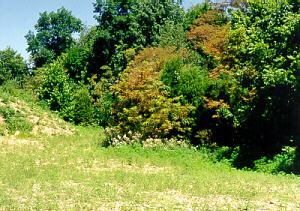

Sundarbans is a mangrove area in the delta formed by the confluence of the Ganges, Brahmaputra, and Meghna Rivers in the Bay of Bengal. I would highlight here as an example the specific case of the Sundarban marsh, one of the largest marshlands across the globe. What concerns us now, however, is the degradation of some of the best-known ecotonal areas of the world. Human interventions over millennia have generated newer ecological areas, flagging the concept of natural plasticity and the existential vitality of nature.

Many insect and plant populations peak in these specific areas. With rising awareness about global climate change and its repercussions and observable effects, the ecotonal species have increasingly been seen as barometers of climate change effects observable over varying local areas.Īnthropogenic ecotones are also existent along forest clearings (forests and agricultural landscapes). Owing to their super adaptable responses, the ecotonal species are more than often, very distinct indicators of ecosystem changes, like temperature, salinity, soil acidity, and oxygen richness levels. Over the recent decades, ecotone monitoring has surged due to another interesting fact.

Because ecotones are often small in spatial extent and within this small area they are relatively rich in biodiversity, with the resident populations adapted to change, their conservation may be actually a very cost-effective strategy towards global biodiversity conservation. As populations in ecotones are potentially pre-adapted to changing environments, they are in most cases, more resistant to climate change, biotic invasions, invasive species, and other environmental changes. Species richness in ecotones.Īs such, ecotones deserve high conservation investment, potentially serving as speciation and biodiversity centers. All these characteristics of ecotonal regions come under the broad definition of ‘edge effect’, and those species which cannot be found in the adjoining Eco biomes, except only along the edges of them, i.e., the ecotonal area are called ‘edge species’. This can be related to the cases of parapatric speciation, where new species are formed from older species upon entering new adjoining niches. Evidence suggests that ecotones may also be speciation hotspots where new forms evolve. Various studies have shown that species richness, diversity, and abundances tend to peak in ecotonal areas, as compared to the adjoining biomes, though exceptions to these patterns occur. The constant struggle for survival at a very high rate in these areas impart very interesting characteristics to these ecological areas. This high tension is said to root from the high adaptability and resilience shown by the species as responses to the rapidly changing conditions in each of the intersecting ecosystems, that subsequently affect the conditions of the ecotone. The vegetation and wildlife that can be found here are in many cases very specific, such that they cannot be found in the intersecting ecosystem areas. Image credits: As the name suggests, ecotones are areas of high specific tension, encompassing all flora and fauna. They range from mountain tree lines over small and large areas to transitions between large biomes and specific ecoregions (eg, Mediterranean and arid), estuaries (freshwater and marine ecosystems) savannahs (forest and grassland ecosystems), etc. These transition areas occur at varying spatial scales and range from natural ecotones between ecosystems and biomes to human-generated boundaries. Tonos, meaning tension) are areas of steep transition between ecological communities, ecosystems, and/or ecological regions along environmental or other gradients (for example, anthropogenic gradients, like agricultural lands and forests).


 0 kommentar(er)
0 kommentar(er)
